|
|
File
Antiquarium of Pieve di San Giorgio di Valpolicella – Sant’Ambrogio di Valpolicella
|
| Piazza della Pieve 14 – San Giorgio di Valpolicella – 37010 Sant’Ambrogio di Valpolicella (VR)
|
  |
|
Summary
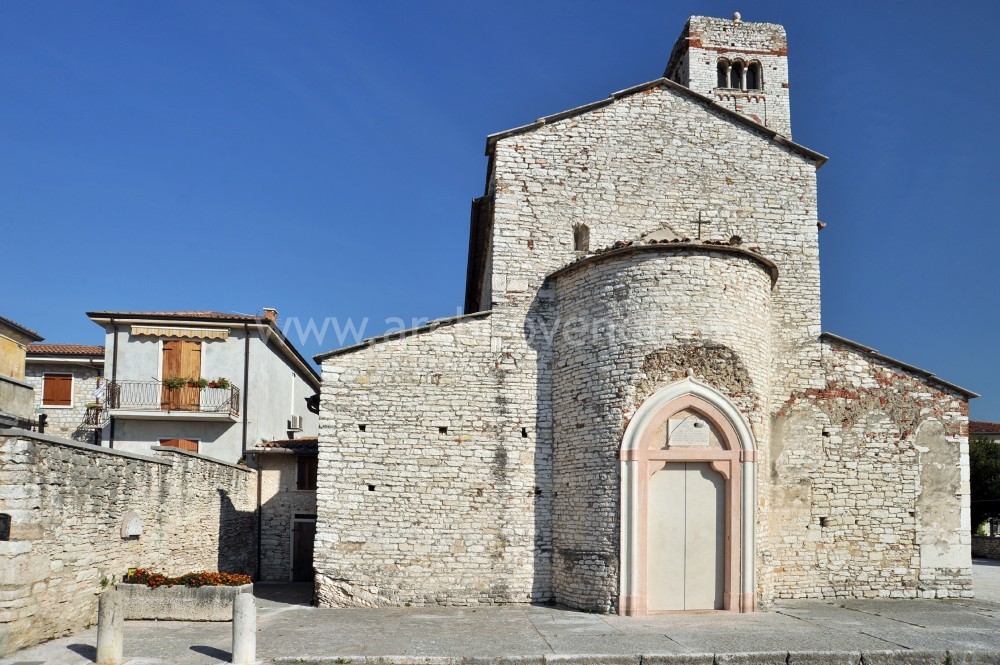
The archaeological Museum of Pieve di San Giorgio established in 1992 is located in the parsonage of the church of San Giorgio di Valpolicella and collects Roman and Late Medieval protohistoric archaeological finds discovered in the surrounding area. Outside the church, there is an archaeological park where the excavations of a settlement dating back to the 4th century B.C. can be seen.
|

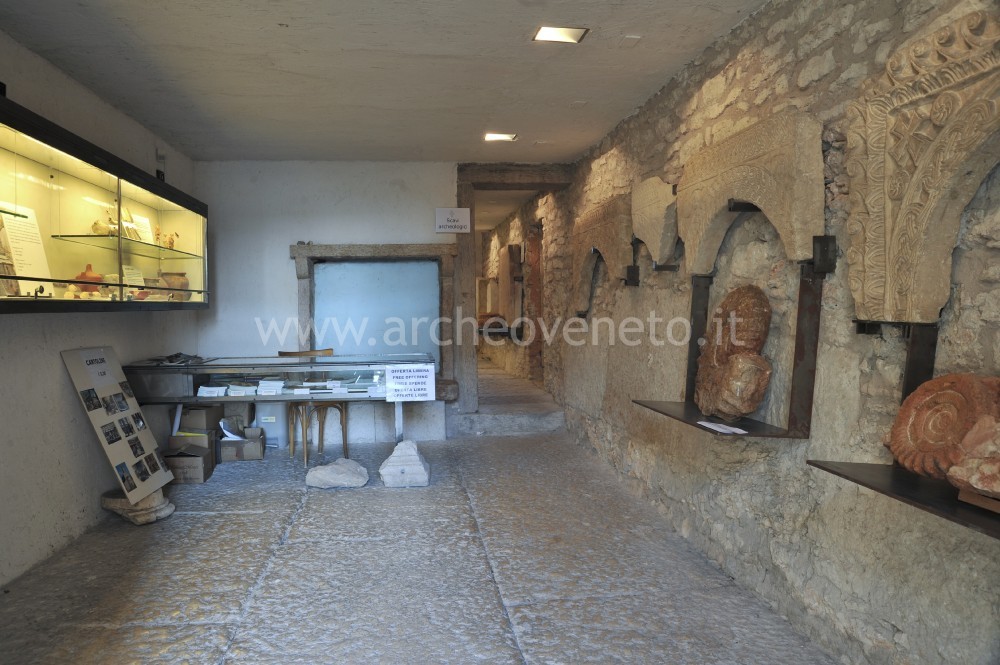 Inside the first room, there are archaeological finds coming from the area surrounding the parish church belonging to different periods which prove that the area has always been inhabited. The first display case contains mainly pre and protohistoric materials, among which arrowheads and flint tools dating back to the late Neolithic Age, a bronze axe of the Late Bronze Age, fragments of a silos and worked cobblestones dating back to the beginning of the Iron Age (9th century B.C.) as well as ornamental objects of the Late Iron Age (fibulas, an aes rude, a bracelet, a ring, beads and pins). The second display case contains items coming from the wide protohistoric village (5th -4th century B.C.) discovered in the area outside the eastern apses of the church. Inside the building, there are the structures of a laboratory-house where stone spindle whorls used to be manufactured and horn and metals were worked. The materials displayed are a bronze saw for working the horn, numerous cut and worked horns and tools for spinning and weaving (spindle whorls, reels and loom weights). Inside the first room, there are archaeological finds coming from the area surrounding the parish church belonging to different periods which prove that the area has always been inhabited. The first display case contains mainly pre and protohistoric materials, among which arrowheads and flint tools dating back to the late Neolithic Age, a bronze axe of the Late Bronze Age, fragments of a silos and worked cobblestones dating back to the beginning of the Iron Age (9th century B.C.) as well as ornamental objects of the Late Iron Age (fibulas, an aes rude, a bracelet, a ring, beads and pins). The second display case contains items coming from the wide protohistoric village (5th -4th century B.C.) discovered in the area outside the eastern apses of the church. Inside the building, there are the structures of a laboratory-house where stone spindle whorls used to be manufactured and horn and metals were worked. The materials displayed are a bronze saw for working the horn, numerous cut and worked horns and tools for spinning and weaving (spindle whorls, reels and loom weights).
The third display case is dedicated to some Roman finds from the area occupied by the ancient pagus of the Arusnates. The material related to this settlement consists in ceramic jars, olpes, lamps, unguentaria, a sigillata cup and a limestone relief. One of the peculiarities of the people of the Arusnates is that, during the Romanization period, they kept many of their divinities; this is witnessed by the votive offering dating back to the 1st century A.D. found in 1964 nearby Il Cristo, made up of many fictile statuettes of divinities (almost exclusively female divinities), of pious donors and of animals (cockerel, owl).
Along one of the long sides of the room, there are four small arches, both complete or fragmented, which can be dated back to the Lombard period of the church.
|

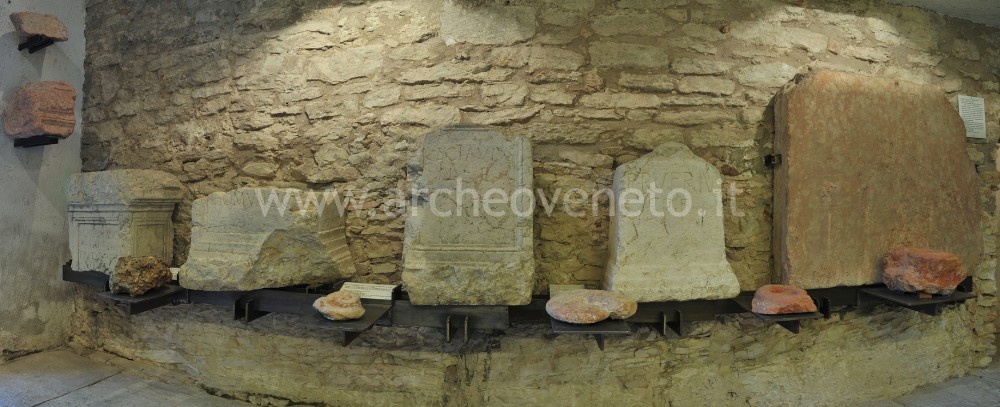 The second room contains a display case with Jurassic ammonites found in the surrounding area and ten Roman inscribed stones. The first one is the most ancient Roman inscription of the Valpolicella (1st century B.C.) recalling the construction of a monument made by a builder of the pagus of the Arusnates. The second room contains a display case with Jurassic ammonites found in the surrounding area and ten Roman inscribed stones. The first one is the most ancient Roman inscription of the Valpolicella (1st century B.C.) recalling the construction of a monument made by a builder of the pagus of the Arusnates.
The following four inscriptions are fragments of altars offered by citizens both of legitimate origin such as Gaius Octavius Turpillus from the Ottavi family, one of the most important ones of the Valpolicella, and of illegitimate origin such as Publius Rufrius, Spurius’s son. The remaining five fragments of inscriptions were part of monuments dating back to the 1st century A.D.
|

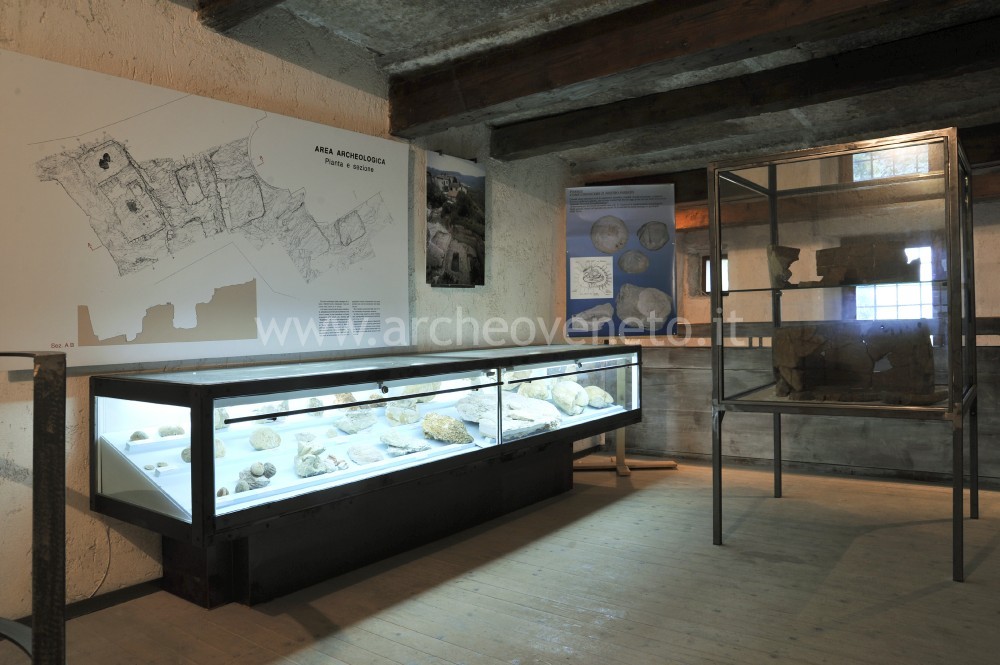 The third room contains a display case with different types of fossils (gasteropods, nautiluses, etc..) and a panel showing the map and the section of the excavation carried out along the eastern side of the church of San Giorgio. The panel is accompanied by notes related to the different structures found during the excavation operations (metallurgic laboratory, the tank and the laboratory-house). The third room contains a display case with different types of fossils (gasteropods, nautiluses, etc..) and a panel showing the map and the section of the excavation carried out along the eastern side of the church of San Giorgio. The panel is accompanied by notes related to the different structures found during the excavation operations (metallurgic laboratory, the tank and the laboratory-house).
|

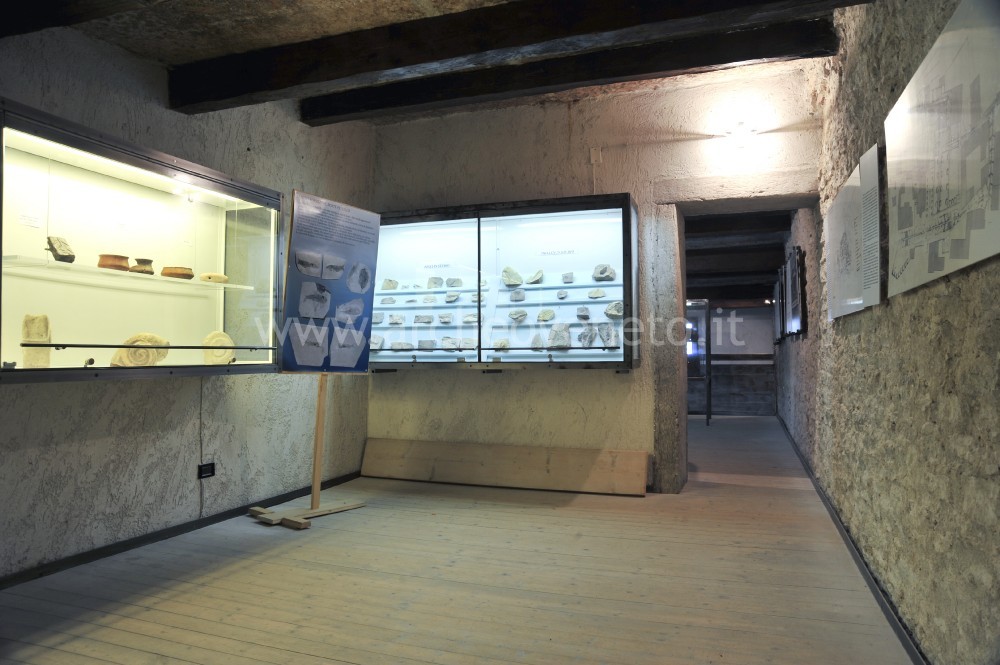 The fourth room contains a display case with fossil fish from Monte Pastello and some panels reporting the recovery plan of the historic centre of San Giorgio di Valpolicella. The fourth room contains a display case with fossil fish from Monte Pastello and some panels reporting the recovery plan of the historic centre of San Giorgio di Valpolicella.
|
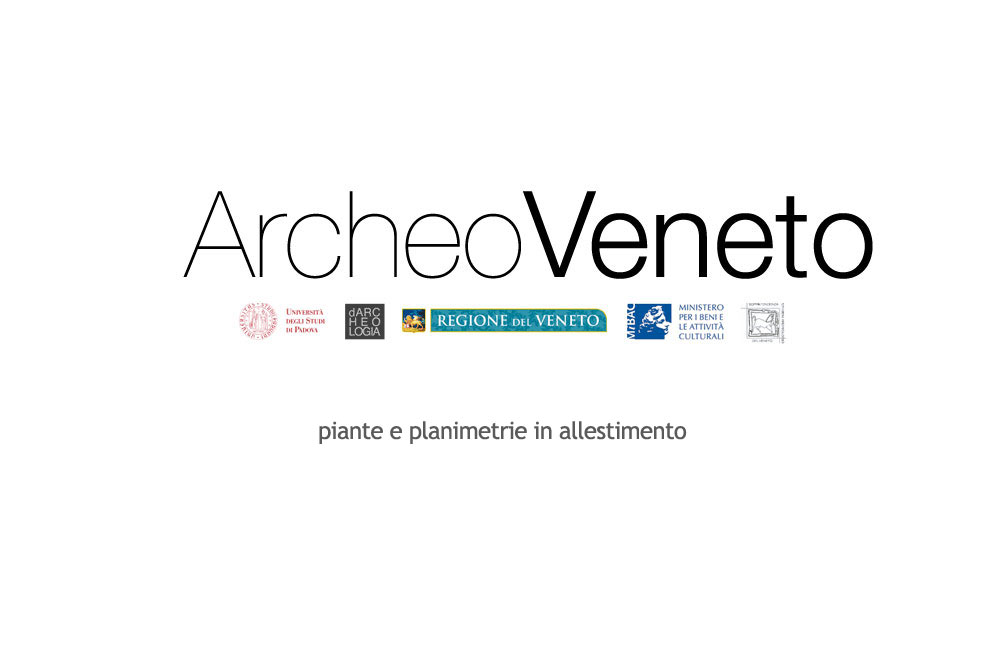
Admission: Negli orari di apertura
Ticket: No
 School access School access
Opening Days
| Tipology |
When |
Specs |
| Summer/Winter |
Monday |
Upon reservation |
| Summer/Winter |
Tuesday |
Upon reservation |
| Summer/Winter |
Wednesday |
Upon reservation |
| Summer/Winter |
Thursday |
Upon reservation |
| Summer/Winter |
Friday |
Upon reservation |
| Summer/Winter |
Saturday |
16.00 – 19.30 |
| Summer/Winter |
Sunday |
10.00 – 12.30 e 16.00 – 19.30 |
Recommended tour time (minutes): 20
 Bookshop Bookshop
 Brochure Brochure
Italian, English and German
 Information boards Information boards
Italian
 Captions under exhibits Captions under exhibits
Italian
 Multilingual ads: Inglese Multilingual ads: Inglese
Tedesco
Brochures
 Guided Tours Guided Tours
| San Giorgio di Valpolicella. Scavi archeologici e sistemazioni museali 1994, a cura di Brugnoli P., Salzani L., Vago di Lavagno , pp. 17-26. |
| Bonetto J. 2009, Veneto (Archeologia delle Regioni d’Italia), Roma, pp. 365. |
|



 Bookshop
Bookshop Brochure
Brochure Information boards
Information boards Captions under exhibits
Captions under exhibits Multilingual ads: Inglese
Multilingual ads: Inglese Guided Tours
Guided Tours




















